CM21 Michael Reichmann Grant Recipients!
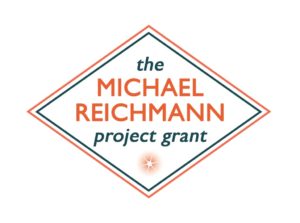
Today we are so excited to announce the 2021 Michael Reichmann Project Grant recipients! Congratulations to Vanessa Leroy, Daniel Mebarek, Andrea Orejarena + Caleb Stein, Claudia Ruiz Gustafson and Olga Sokal! These photographers have been selected from the 2021 Critical Mass Top 200 Finalists to each receive a $1000 cash award to go towards the development of a new or current project. Each artist is creating exemplary work on critical topics and we are excited for the opportunity to support them via this grant!
Below is a brief introduction to their projects, but please check out each artist’s website to delve deeper into their important work!
VANESSA LEROY | website
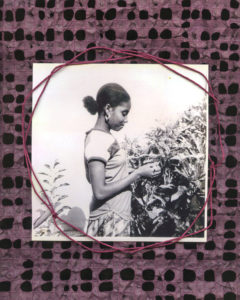
There isn’t a lot of space for dreaming in an oppressive world, so I use photography as a tool to create worlds where I freely navigate the various facets of my life experience and identity as a black queer woman. In my senior thesis project titled as our bodies lift up slowly, I weave the viewer between the past and present using archival family photographs, text, collages, environmental portraits, and the use of both grayscale and color. Heavily inspired by Octavia Butler’s novel Kindred, in which the young black protagonist Dana Franklin navigates a shifting timeline to uncover truths about her family lineage, I employ non-linear visual storytelling as a method to arrive at similar discoveries.
I reflect upon my Haitian Catholic upbringing, the effects of generational trauma, and the relationships that have nurtured my growth. As a person who has compartmentalized difficult emotions for most of my life, I’m looking inward at the parts of myself that I previously found unsavory and tried to ignore. I create photographs that speak to and comfort my younger self, and the versions of myself that struggled to carry the weight of having poor mental health and low self-esteem. I offer my newfound sense of security which has come through building a stronger emotional foundation for myself. In revisiting the past and imagining the future, I have created space for myself to heal in the present.
DANIEL MEBAREK | instagram
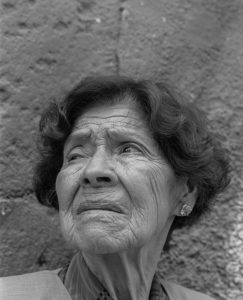
This body of work entitled La Lucha Continua (The Struggle Continues) started as a response to the 2019 political crisis in Bolivia, which left 33 people dead and hundreds injured.
Grappling with the profound uncertainty of that moment, I revisited documents and photographs that belonged to my late uncle and grandfather, both of whom were involved in political activism in the country. My grandfather, Carlos Daza Lavadenz, was a member of the Revolutionary party of the Nationalist Left (PRIN) and was imprisoned and killed in the context of the dictatorship of Hugo Banzer Súarez in 1971. His son and my uncle, Rodrigo Daza, was a member of the Workers’ Socialist Party (PST) and a syndicate leader in the 1980’s.
Using the photographic process of the cyanotype, which is carried out by exposure to ultraviolet light, I decided to re-interpret the documents they left behind. The sunlight acts in this context as a metaphor to shed light upon my family’s history while also emphasizing the intimate and material bond of these documents with the past.
The cyanotypes have been placed in dialogue with contemporary photographs depicting both gentle and stark observations of my family and the city of La Paz. Through this personal exploration of my family’s history, this body of work seeks to address issues regarding collective memory, state violence and trauma.
ANDREA OREJARENA + CALEB STEIN | website
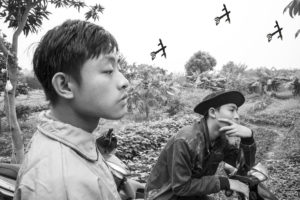
Focusing on a group of teenagers at Làng Hữu Nghị, the photos in Long Time No See project an intimate choreography between the subjects and us, as an artist duo, with drawing interventions made by the subjects. This body of work is a layering of collaborative and documentary elements in an effort to communicate the complex legacy of the post-war, transnational relationship between Vietnam and the U.S.
This body of work was made to challenge the traditionally rigid power dynamics between subject and author. Over a two-year period, we established a workshop at Làng Hữu Nghị to engage in a visual exchange.
Làng Hữu Nghị is a residence in Hanoi, Vietnam for people affected by Agent Orange, one of the ‘Rainbow Herbicides’ used by the U.S. Air Force during the war under Operation Ranch Hand. The chemical weapon’s genetic effects continue to be passed down through the generations, so this residence is shared by Vietnamese veterans and their current and future descendants.
As an artist duo we are interested in how larger socio-economic and political structures are simultaneously visible and hidden within what is personal, psychological, and spiritual.
In addition to the photos, this body of work includes drawings contributed by the younger generation which are intended to sit side by side with the photographic component of the project. Furthermore, this work includes a series of video vignettes we co-directed with Vietnamese veterans. They are freely associated images that blur the lines between memory, reality, and wish fulfillment.
CLAUDIA RUIZ GUSTAFSON | website
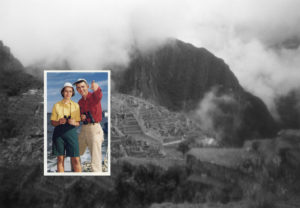
In City in the Clouds, I reflect upon the impact of Hiram Bingham’s expeditions to Perú. A Yale University historian. Bingham was one of many western white men to lead colonial explorations between 1911 and 1915 using the advancement of science as an excuse to plunder ancient indigenous cultures. Using my photos made during a trip to the Caminos del Inca (Inca Trails) in 1998, alongside archival documents, this work retells the official version of the “discovery” of Machu Picchu.
Financed by the National Geographic Society and Yale, Bingham is credited with the “discovery” of Machu Picchu. He was not an archeologist and there were no archeologists accompanying him. Bingham and his team dissected the Quechua community and looted sacred graves under the guise of archeological research. They ignored the Quechuas except as guides to find the ruins, to do the excavation work, and as subjects to study for anthropometry. None of the expeditions considered the local people who for centuries lived nearby and who were familiar with the nearby ruins. In fact, Machu Picchu was discovered years earlier by a local farmer named Agustín Lizárraga Ruiz.
Over the course of his expeditions, Bingham took 12,000 photographs with cameras donated by Kodak. For Yale, he collected hundreds of human remains and artifacts. These photographs were published in Harper’s Magazine and National Geographic who held the exclusive rights to them, and Machu Picchu went on to become a discovery of science and the property of Yale University as its custodian. In recent years, Peruvians have been awakened to our own heritage and have demanded the return of certain artifacts. In fact, in 2012 Yale University returned a third batch of several relics to their rightful owners, the people of Perú.
OLGA SOKAL | website
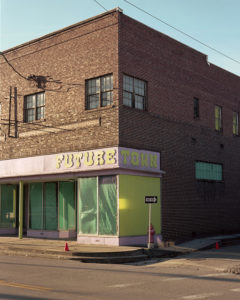
History has shown the negative effects on the local communities of the massive expansion and sudden decrease of the coal industry. In places such as the USA and South Wales and soon to be China and Poland, this narrative is familiar. The members of COP have accelerated the addressing of the catastrophic environmental consequences of the coal industry and mines within many communities and over the last 35 years have been closed overnight. The effect on the local communities that have relied on the production of fossil fuels to sustain an income has been monumental. Large swathes of countries where mining is ubiquitous are now without income and are now struggling with the absence of employment within a polluted landscape.
Building a personal narrative starting from my hometown of Belchatow in Poland, this project collects intimate stories from families, former and current workers, and younger generations, whose fate drastically changed with this era defining shift in paradigm. In communities where this narrative is ubiquitous, prosperity has become a thing of the past and a distant dream. The slow and collaborative process of the 4×5 camera mediates and establishes the relationship between the land and the human cost of the dominant capitalist system.
Through interconnected and dispersed imagery from three continents and five countries, the project aims to tell a universal story about the decrease of coal and its sociological impact on generations of people. By collapsing the notion of directing an audience through a traditional linear narrative, with a clean three act structure, the project questions the finality of ‘endings’ and highlights an eerily familiar erosion course on societies that transcends culture and time.
This award is made possible by a generous endowment gifted to Photolucida by the Luminous Endowment for Photographers – an organization created by the late Michael Reichmann in 2007 to foster current and anticipated photography projects. Photolucida is excited to continue Michael’s legacy by providing this opportunity to emerging photographers.
As part of our Gifted Book Award, we are also excited to send a copy of Running Falling Flying Floating Crawling to the following Critical Mass 2021 Finalists – there was something about each person’s body of work that was somehow reflective of the point of the book. We hope it makes a great addition to your library! Congratulations to:
Kat Bawden, Meg Birnbaum, Marna Clarke, Andrés Mario de Varona, Rocio De Alba, Regina DeLuise, Sharon Draghi, Tracy Fish, Morgan Davis Foehl, Marsha Guggenheim, Joan Haseltine, Jenica Heintzelman, Kei Ito, Alec Kaus, Billy Kidd, David Knox, Ruth Lauer-Manenti, Lisa McCord, Bruce Myren, Faith Ninivaggi, Lori Ordover, Jared Ragland, Parker James Reinecker, Melinda Reyes, Heather Evans Smith, Erinn Springer, Peggy Washburn and Becky Wilkes




